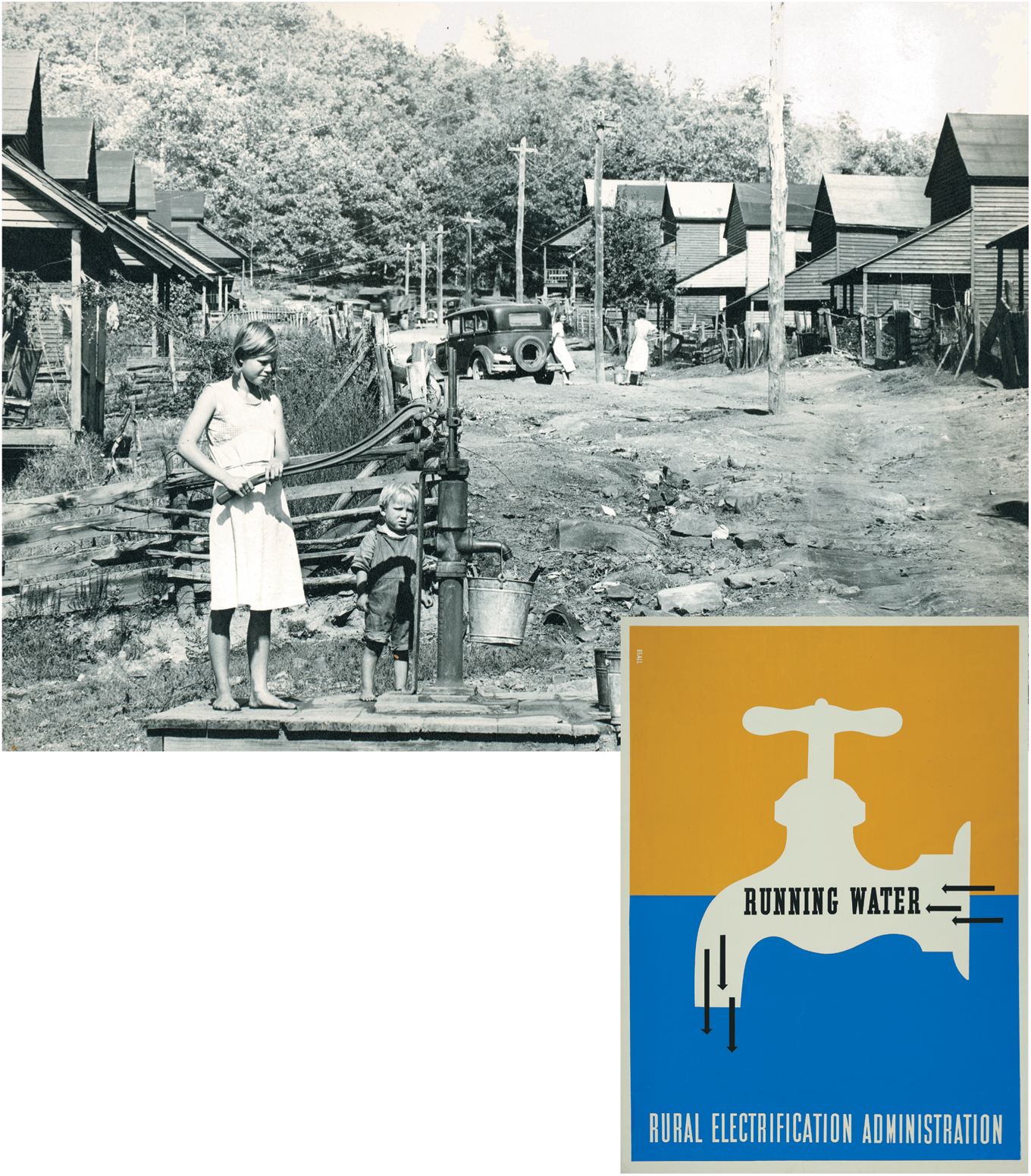Agricultural Initiatives.
Printed Page 661 Chapter Chronology
Agricultural Initiatives. Farmers had been mired in a depression since the end of World War I. New Dealers diagnosed the farmers' plight as a classic case of overproduction and underconsumption. Following age-old practices, farmers tried to compensate for low crop prices by growing more crops. Of course, producing more crops pushed prices lower still. Farm families' income sank to $167 a year, barely one-tenth of the national average in 1932.

New Dealers sought to cut agricultural production, thereby raising crop prices and farmers' income. With more money in their pockets, farm families — who made up one-third of all Americans — would then buy more goods and lift consumption in the entire economy. To reduce production, the Agricultural Adjustment Act (AAA) passed in May 1933 authorized the "domestic allotment plan," which paid farmers not to grow crops. Individual farmers who agreed not to plant crops on a portion of their fields (their "allotment") would receive a government payment compensating them for the crops they did not plant. While millions of Americans like Florence Owens and her children went to bed hungry, farmers slaughtered livestock and destroyed crops to qualify for their allotment payments.
Agricultural Adjustment Act (AAA)
New Deal legislation passed in May 1933 aimed at cutting agricultural production and raising crop prices and, consequently, farmers' income. Through the "domestic allotment plan," the AAA paid farmers to not grow crops.
With the formation of the Commodity Credit Corporation, the federal government allowed farmers to hold their harvested crops off the market and wait for a higher price. New Dealers also sponsored the Farm Credit Act (FCA) to provide long-term credit on mortgaged farm property, allowing debt-ridden farmers to avoid foreclosures that were driving thousands off their land (see Map 24.1).
Crop allotments, commodity loans, and mortgage credit made farmers major beneficiaries of the New Deal. Crop prices rose impressively, farm income jumped 50 percent by 1936, and FCA loans financed 40 percent of farm mortgage debt by the end of the decade. These gains were distributed fairly equally among farmers in the corn, hog, and wheat region of the Midwest. In the South's cotton belt, however, landlords controlled the distribution of New Deal agricultural benefits and shamelessly rewarded themselves while denying benefits to many sharecroppers and tenant farmers — blacks and whites — by taking the land they worked out of production and assigning it to the allotment program. As the president of the Oklahoma Tenant Farmers' Union explained, large farmers who got "Triple-A" payments often used the money to buy tractors and then "forced their tenants and [share]croppers off the land," causing these "Americans to be starved and dispossessed of their homes in our land of plenty."